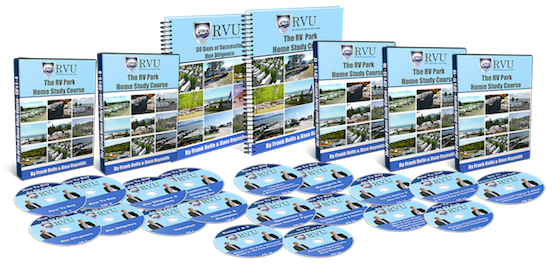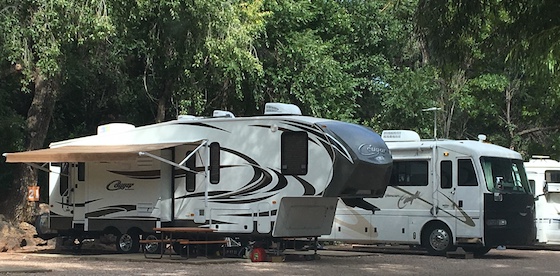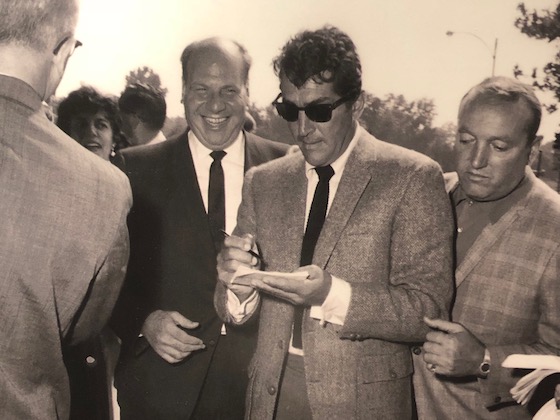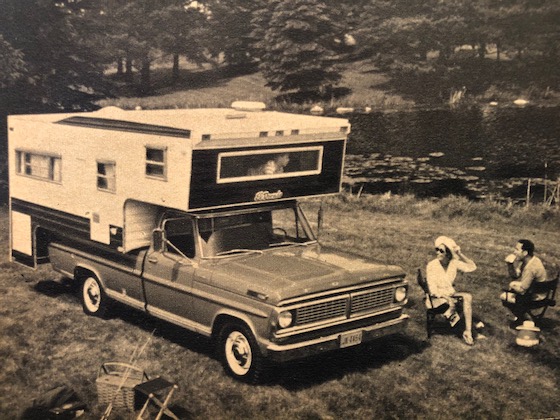This is an RV park in Austin that we drive by all the time. Even from the outside, you can tell it’s a great property. But the entry is what really sets it apart. What makes the Royal Palm’s entry so good?
Big sign that can be easily seen from the highway
It all starts off with a giant sign that can be seen clearly from the highway. It’s a bigger investment than many RV park owners would be able to make – about a $40,000 structure. But we have to admire its sheer size. It’s about as big as a billboard.
A happy “Welcome Home Y’all!”
We like the fact that the sign sets the tone that this is a friendly place that really wants your business. Since the entry sign is so gigantic, it can attach a panel on like this on to the sign and it’s still clearly legible. For more RV parks, the alternative would be to put a smaller sign at the entrance that offers the same sentiments.
A giant “Propane Sold Here”
Propane is a huge issue for most RVs – they need it for heat, hot water and cooking. And the sign reinforces that this important ingredient is for sale at the RV park, as well as sending a message to customers that this is a one-stop shop for everything they need.
Immaculate grounds and paving
Even from the highway you can see that the property is immaculate. Of course, you can see that this is partly an optical illusion. By paving over all of the grass at the entry, there’s nothing to mow or weed-eat. This is a common trick that we see in many RV parks in California – and a clever one. The park then takes full advantage of all this paving by keeping it free of potholes and all one color via seal-coating. Fresh striping finishes the look.
Great landscaping and masonry walls
We like the selection of palm trees at the entrance, which supports the name. But you can see, even from the highway, that the landscaping continues even past the entry. And it appears that almost all of it is hearty native choices that do require irrigation. We also like the masonry walls, as opposed to the typical wooden fencing or railroad ties. Masonry just looks expensive and gives the proper vibe that it’s a classy park.
Wide road to turn into
Big RVs need plenty of room to turn, and this park provides it. Since the most affluent customers are those with giant motorhomes – costing $100,000+ -- it certainly is not a bad thing to cater to them, and since the average RV is only on the road for 14 days per year the more room for error the better.
A giant U.S. flag
An obvious feature of this property is a giant U.S. flag set near the office. It serves multiple purposes: 1) it makes the park even more attention-getting from the highway 2) it lends an atmosphere of patriotism and 3) it helps the customers find the office. Although this flag is extremely large and expensive, even a smaller model would do the trick nearly as well.
How many of these ideas can you incorporate into your RV park?
The whole point of this article is to suggest changes you can make to your RV park entrance to make it even better. While some things are hard to create (like a large turning radius) others are simple and relatively inexpensive (like a large U.S. flag). Surely, there are some ideas here you can utilize.
Conclusion
A great RV park entry sets an important first impression. But the best not only accomplish this, but also attract customers off the road. Every dollar you invest in your entry will yield a multiple of that when you go to sell or refinance.







